-
Irish police consider deploying drones
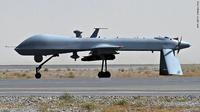
Police in northern Ireland are considering deploying small surveillance drones to help combat crime and the dissident republican threat as an alternative to helicopters; with police suffering budget shortages, many agencies cannot afford the roughly £7 million, or $11 million, a year it takes to maintain a helicopter
-
-
Surveillance plane to circle Lancaster ten hours a day
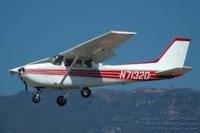
Beginning in May, a Cessna 172 airplane will hover over the Lancaster, California for ten hours a day collecting intelligence and keeping an eye on residents; the surveillance program was recently approved by city leaders in an effort to fight crime, but the prospect of aerial surveillance has critics concerned about privacy violations
-
-
Plan for cameras and mics in U.K. cabs draws sharp criticism

Privacy advocates in Oxford, Britain are up in arms over plans to install security cameras and audio recording cameras in every taxi; the city council recently passed a plan that would require every taxi driver in town to equip their cabs with the £460 devices by 2015 or have their license revoked
-
-
Drones and privacy
With civilian unmanned surveillance drones now capable of listening in on cell phone conversations, monitoring Wi-Fi traffic, seeing into backyards and windows not visible from the street, and tracking a person’s movement privacy advocates are concerned that the rapid advances in technology could violate privacy rights
-
-
Montgomery County adds drone to arsenal
For local police departments who do not have a helicopter unit or cannot afford one, small unmanned aerial vehicles (UAVs) are quickly becoming a cheap solution; the Montgomery County Sheriff’s Office in Texas recently purchased the ShadowHawk, a small remote controlled helicopter manufactured by Vanguard Defense Industries
-
-
Advances in drone technology pose threat to U.S.
Advances in UAV technology, in combination with innovations in drone airframe and propulsion system design, are now making it possible to build very small, inexpensive drones, and to control them using interfaces as simple as a touch screen, computer mouse, or joystick. These UAVs can be ideal terrorist weapons.
-
-
The morality of remote-controlled killing
Israel has been using UAVs in its war against terrorists for a while now, and under President Barack Obama, the United has dramatically increased its use of UAVs in its fight against al Qaeda and its affiliates in Afghanistan, Iraq, Pakistan, Yemen, Somalia, and Sudan. This increasing use of UAVs has given rise to moral dilemmas, and debates are underway in the media and academia over the legitimacy and morality of such attacks.
-
-
Supreme Court to rule on constitutionality of warrantless GPS tracking
On Tuesday, the U.S. Supreme Court heard oral arguments in a case (United States v. Jones) in which the United States argued that the Fourth Amendment does not prohibit the government from using GPS tracking to monitor a suspect’s movements on public streets. Some legal scholars say that because a previous verdict sanctioned beeper tracking, the Court may well rule in favor of the government, declaring the warrantless GPS tracking does not violate a person’s constitutional right to privacy.
-
-
Tiny robot can survey hard-to-reach places
A flying robot the size of a dinner plate can zoom to hard-to-reach places; the tiny propeller-powered robots can be packed away into a suitcase; they have multiple cameras which enable them to see the world around them as they navigate their way through buildings
-
-
Proliferation of drones raises alarms
Security analysts fear that with the increasing proliferation of unmanned aerial drone technology, terrorists could eventually begin using them to drop explosives or even biological weapons
-
-
U.S. Army to deploy “kamikaze” drones
The U.S. Army is getting ready to add a “kamikaze drone” to its arsenal; the new drone is designed to hover quietly in the sky before it dive-bombs directly into a human target
-
-
Texas county police buys drone that can carry weapons
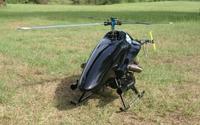
The police in Montgomery County — and area north of Houston, Texas — is the first local police in the United States to deploy a drone that can carry weapons; the police says it will be used in chases of escaping criminals and tracking drug shipments
-
-
DHS receives three drones, lacks pilots and resources to fly them
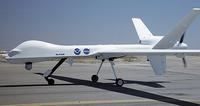
Congress has awarded $32 million to DHS to purchase three new aerial surveillance drones, despite the agency never requesting them and lacking a sufficient number of pilots and resources to operate them; with the additional appropriations, Congress did not include funding to train or hire new pilots and crews or to purchase spare parts, placing a financial strain on the agency’s limited resources
-
-
U.A. Navy sees blimp come-back
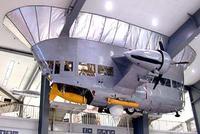
In 1962, after forty-seven years, the U.S. Navy effectively terminated Lighter-Than-Air (LTA) operations; but the blimp is making a come-back, and on 26 October, the Naval Air Warfare Center Aircraft Division and the U.S. Naval Research Laboratory unveiled the MZ-3A airship; for now, it is the only manned airship in the U.S. Navy’s inventory
-
-
World's first 1080p/30fps video analytics solution on an FPGA announced
Altera Corporation said it was introducing what it described as the world’s first FPGA-based full-HD 1080p/(30 frames per second) 30fps video analytics on a Cyclone IV FPGA
-
- All
- Regional
- Water
- Biometrics
- Borders/Immig
- Business
- Cybersecurity
- Detection
- Disasters
- Government
- Infrastructure
- International
- Public health
- Public Safety
- Communication interoperabillity
- Emergency services
- Emergency medical services
- Fire
- First response
- IEDs
- Law Enforcement
- Law Enforcement Technology
- Military technology
- Nonlethal weapons
- Nuclear weapons
- Personal protection equipment
- Police
- Notification /alert systems
- Situational awareness
- Weapons systems
- Sci-Tech
- Sector Reports
- Surveillance
- Transportation
Advertising & Marketing: advertise@newswirepubs.com
Editorial: editor@newswirepubs.com
General: info@newswirepubs.com
2010-2011 © News Wire Publications, LLC News Wire Publications, LLC
220 Old Country Road | Suite 200 | Mineola | New York | 11501
Permissions and Policies
Editorial: editor@newswirepubs.com
General: info@newswirepubs.com
2010-2011 © News Wire Publications, LLC News Wire Publications, LLC
220 Old Country Road | Suite 200 | Mineola | New York | 11501
Permissions and Policies
